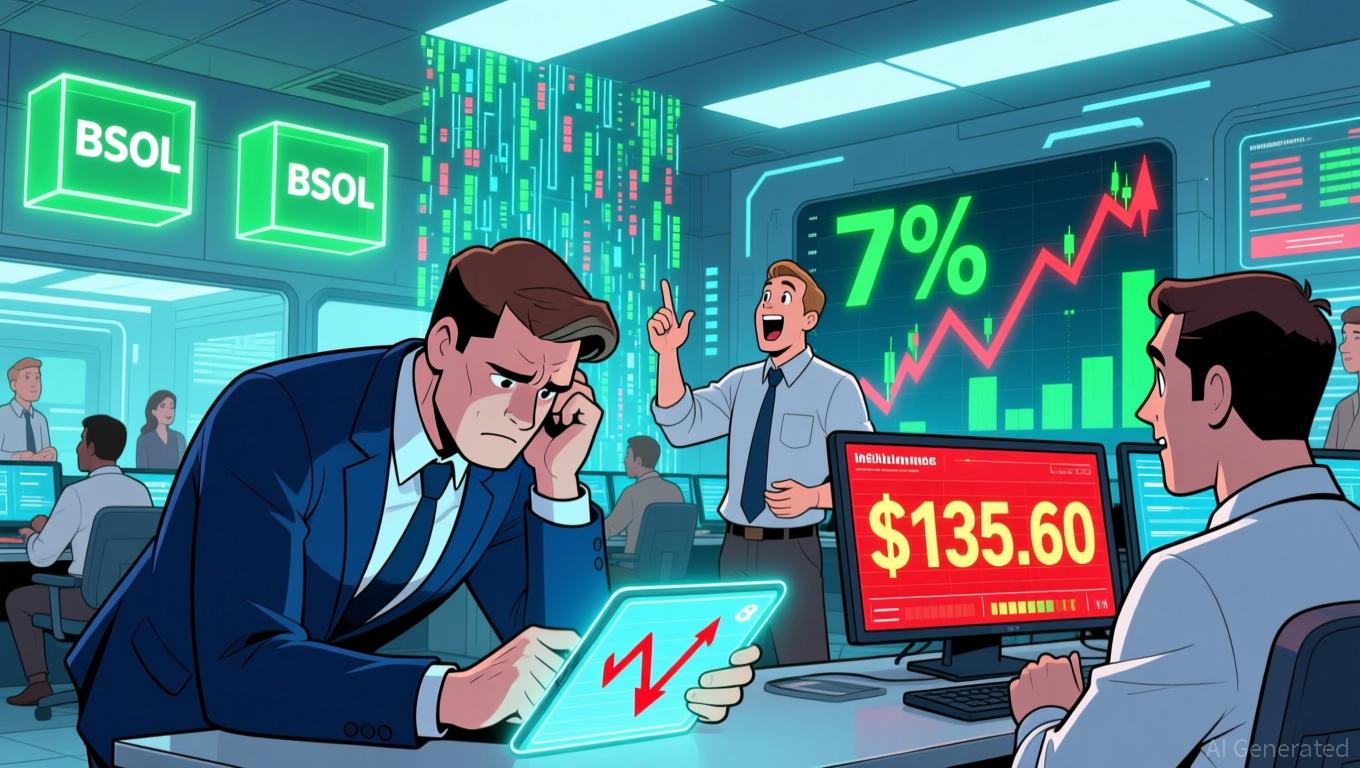COAI's Abrupt Decline: What Causes a Significant Downturn in a Previously Popular Tech Index?
- COAI index plunged 88% in November 2025 due to regulatory ambiguity, earnings underperformance, and macroeconomic risks. - CLARITY Act left AI/crypto projects in legal gray areas, exacerbating volatility as investors fled speculative assets. - C3.ai's $116.8M loss, leadership turmoil, and 54% stock decline heavily dragged COAI's performance. - Global risk-off behavior and AI-driven trading amplified volatility amid Fed policy uncertainty and inflation concerns. - Market reassesses AI/crypto valuations as
Regulatory Ambiguity: The CLARITY Act’s Mixed Impact
The CLARITY Act, introduced in November 2025, was designed to bring more transparency to digital asset regulation by expanding the Commodity Futures Trading Commission’s (CFTC) authority and clarifying its relationship with the Securities and Exchange Commission (SEC)
Additionally, the Act’s emphasis on self-custody for personal use overlooked the requirements of custodians and financial service firms, leaving significant regulatory gaps
Earnings Misses and Executive Instability
C3.ai, a key component of the COAI index, has significantly weighed down overall performance. The company
The wider COAI index, which includes early-stage AI and crypto AI projects, has found it difficult to stand out as skepticism toward speculative valuations grows. In contrast, AI infrastructure companies like Celestica (CLS) have surged, with analysts boosting price targets to $440, highlighting a clear split in sector performance
Global Risk-Off Sentiment: Macro Forces at Play
The COAI index’s decline mirrors a broader retreat from risk in November 2025, as global stock markets fell amid concerns about an AI-driven bubble and uncertainty regarding U.S. Federal Reserve interest rate decisions.
This move away from risk was driven by changing expectations for Federal Reserve policy. By mid-November, the likelihood of a December rate cut had fallen to 50%, down from over 60% earlier that week, after officials like St. Louis Fed President Alberto Musalem cautioned against lowering rates too soon
Macroeconomic Backdrop: Cooling Inflation, Trade Expansion, and AI’s Influence
Global economic data for the fourth quarter of 2025 indicates inflation has eased to 5.33%, with the eurozone approaching its 2% target and U.S. services inflation still high at 4%
The growing use of artificial intelligence in trading has also increased market volatility. By 2025,
Conclusion: Temporary Panic or Fundamental Change?
The collapse of the COAI index signals a market reevaluation of AI and crypto valuations amid regulatory confusion, weak earnings, and challenging macroeconomic conditions. Although the decline may seem overdone—especially considering C3.ai’s steady revenue growth and the AI sector’s promising future—it highlights how vulnerable speculative assets are in a cautious market climate.
For investors, the main issue is whether this downturn is a chance to buy or a sign of deeper problems. The eventual enforcement of the CLARITY Act could bring needed transparency, and the strong performance of AI infrastructure stocks shows that not all AI investments face the same risks. Still, until regulations become clearer and earnings improve, the COAI index is likely to remain unpredictable and risky.
Disclaimer: The content of this article solely reflects the author's opinion and does not represent the platform in any capacity. This article is not intended to serve as a reference for making investment decisions.
You may also like
Solana News Today: Solana ETFs Attract Investments While Bitcoin and Ethereum ETFs See $437M Outflow
- Solana (SOL) fell to $135.60 in November 2025 amid bearish trends, but new ETFs drove inflows surpassing Bitcoin/Ethereum outflows. - Bitwise's BSOL ($365M) and Fidelity's FSOL (0.25% fee) led competition, offering institutional-grade staking yields (~7%) to attract investors. - BlackRock avoided Solana ETFs, prioritizing Bitcoin/ETH due to altcoin liquidity concerns, despite $437M outflows in its own crypto ETFs. - Rising Solana futures open interest and fee waivers ($1B threshold) highlight ETF-driven

Retail vs. whales: Who actually drives the Santa rally?

Ethereum News Update: Crypto Market Divides: Stability or Speculation Amid BlockDAG’s Rapid Growth
- Dogecoin (DOGE) maintained top-ten crypto status in early November 2025 amid market volatility, contrasting with Chainlink's (LINK) uncertain whale activity ahead of delayed U.S. CPI data. - BlockDAG (BDAG) raised $435M in its presale using hybrid Proof-of-Work/DAG architecture, with analysts projecting $0.3–$0.4 launch price and potential 3,000% returns. - Chainlink's price divergence from RSI and whale accumulation of 150,000 LINK ($2.36M) signaled possible trend reversal above $18.76 or bearish confir

Crypto Presale Comparison November 2025: Hyper, BlockDAG, Remittix, Little Pepe, and Layer Brett
